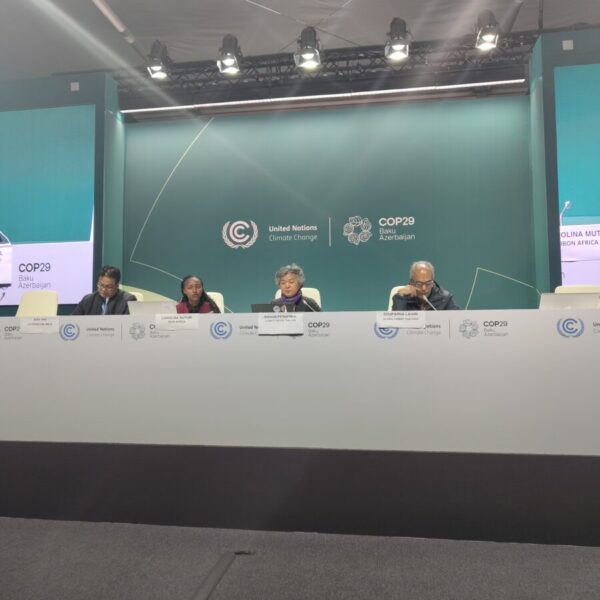Challenges for Biodiversity #1
After two weeks of our special envoy's presence at COP29, 22-med outlines the main points of the discussions that took place around the Mediterranean. Throughout December, we will decode the major issues and key outcomes of the 29ᵉ UN Climate Summit through three themes: Biodiversity, building transition, decarbonization...
COP29 highlighted crucial challenges related to biodiversity in a context of accelerating climate change. Through several initiatives, stakeholders emphasized the interconnection between biodiversity, ecosystems, and sustainable development. The importance of non-economic losses, such as those affecting biodiversity, ecosystem services, and cultural heritage, was a recurring theme in the discussions, in line with the Global Biodiversity Framework of Kunming-Montreal and the commitments of the Paris Agreement.
Main Outcomes and Observations
Non-economic losses refer to non-monetary impacts such as the disappearance of ecosystem services (water filtration, carbon storage) and cultural values (sacred sites, traditional knowledge). These losses, amplified by ecosystem degradation, affect food security, mental health, and social resilience, particularly among vulnerable populations. Decision-makers at COP29 proposed solutions such as integrating traditional knowledge, targeted funding, and nature-based solutions to restore ecosystems and protect communities. They stressed the urgency of limiting inequalities while preserving these vital resources.
Forests, essential for the climate, absorb 30% of CO₂ emissions and protect against disasters. They provide crucial ecosystem services and contribute to climate adaptation through solutions like forest restoration. However, these costly interventions face governance challenges (illegal deforestation) and social equity issues. COP29 calls for increased financial support through mechanisms such as REDD+ (www.redd.unfccc.int), carbon credits, and public-private partnerships.
Among the advancements, 1,294 ecosystem-related indicators have been identified. However, 70% of them lack links to operational targets, limiting their usefulness. Standardization of indicators, alignment with measurable objectives, and strengthening monitoring capacities are necessary to improve their relevance. The conference also highlighted financial innovations such as results-based financial aid for deforestation, with local initiatives like the fund proposed by Vanuatu for loss and damage.
However, synergies between biodiversity and climate remain underutilized. Integrating nature-based solutions into Nationally Determined Contributions (NDCs) is essential to achieve climate goals while protecting ecosystems. COP29 also emphasizes the importance of strengthening local capacities, harmonizing indicators, and developing innovative financing to support developing countries.
Mediterranean Challenges
The Mediterranean region, considered a hotspot for climate change, is experiencing increasing pressures on its marine and terrestrial ecosystems. During a press conference at COP 29 in Azerbaijan, MedECC and the Union for the Mediterranean defined the main challenges, including curbing biodiversity loss due to ocean heat waves and the invasion of non-native tropical species, exacerbated by rising temperatures and ocean acidification. These phenomena have caused mass mortality events affecting key species like corals and mollusks, thus disrupting marine ecosystems. Additionally, high levels of plastic pollution, which account for up to 82% of waste in the Mediterranean, and unsustainable use of land resources severely threaten local ecosystems. These impacts highlight the urgency of adopting ambitious strategies and nature-based solutions to protect biodiversity and ensure community resilience against increasing risks.
By placing biodiversity at the heart of climate solutions, decision-makers have a unique opportunity to build sustainable resilience. However, rapid and coordinated actions are necessary to avoid irreversible ecological tipping points.
Anthropogenic Pressures: Human-induced stress factors causing disturbances, damage, or loss of one or more components of an ecosystem temporarily or permanently (source Bonobos world)

Featured Photo: Conference of experts on forest biodiversity at COP29 ©Edward Sfeir
